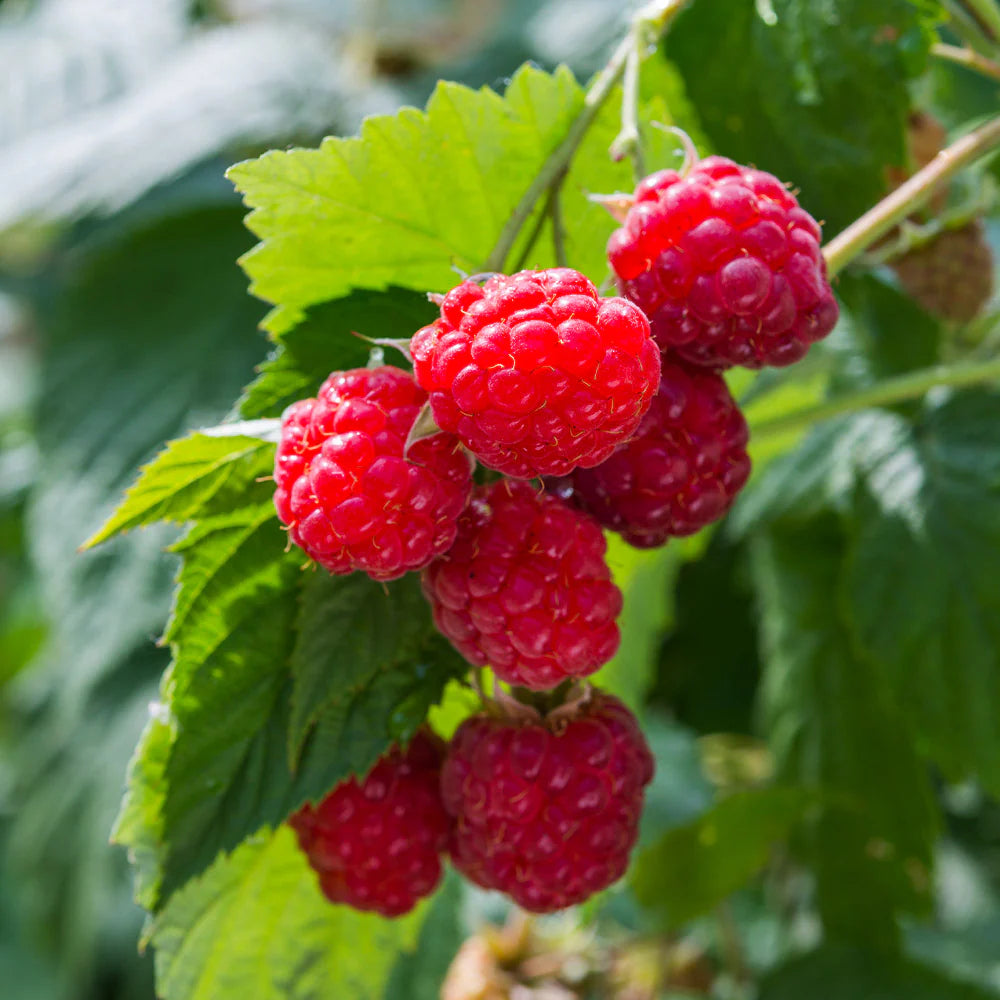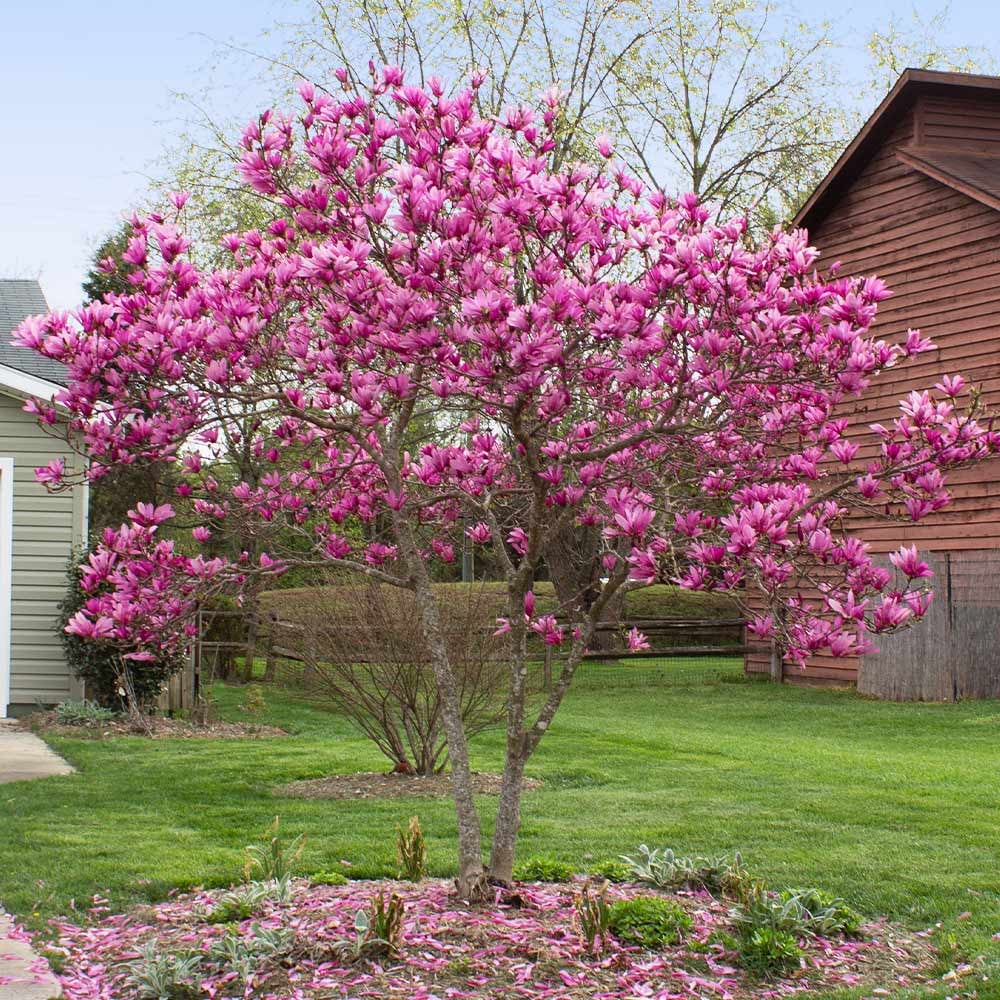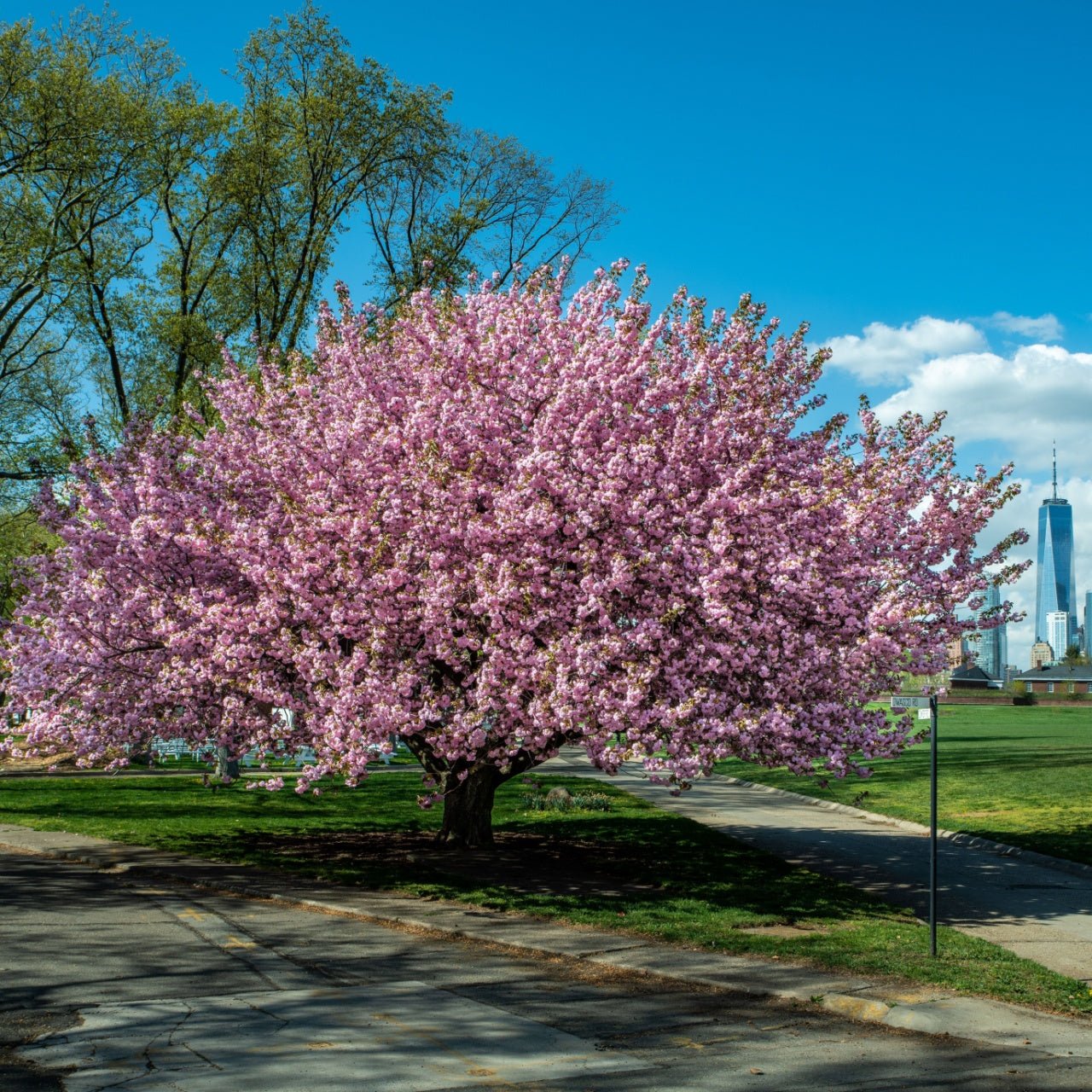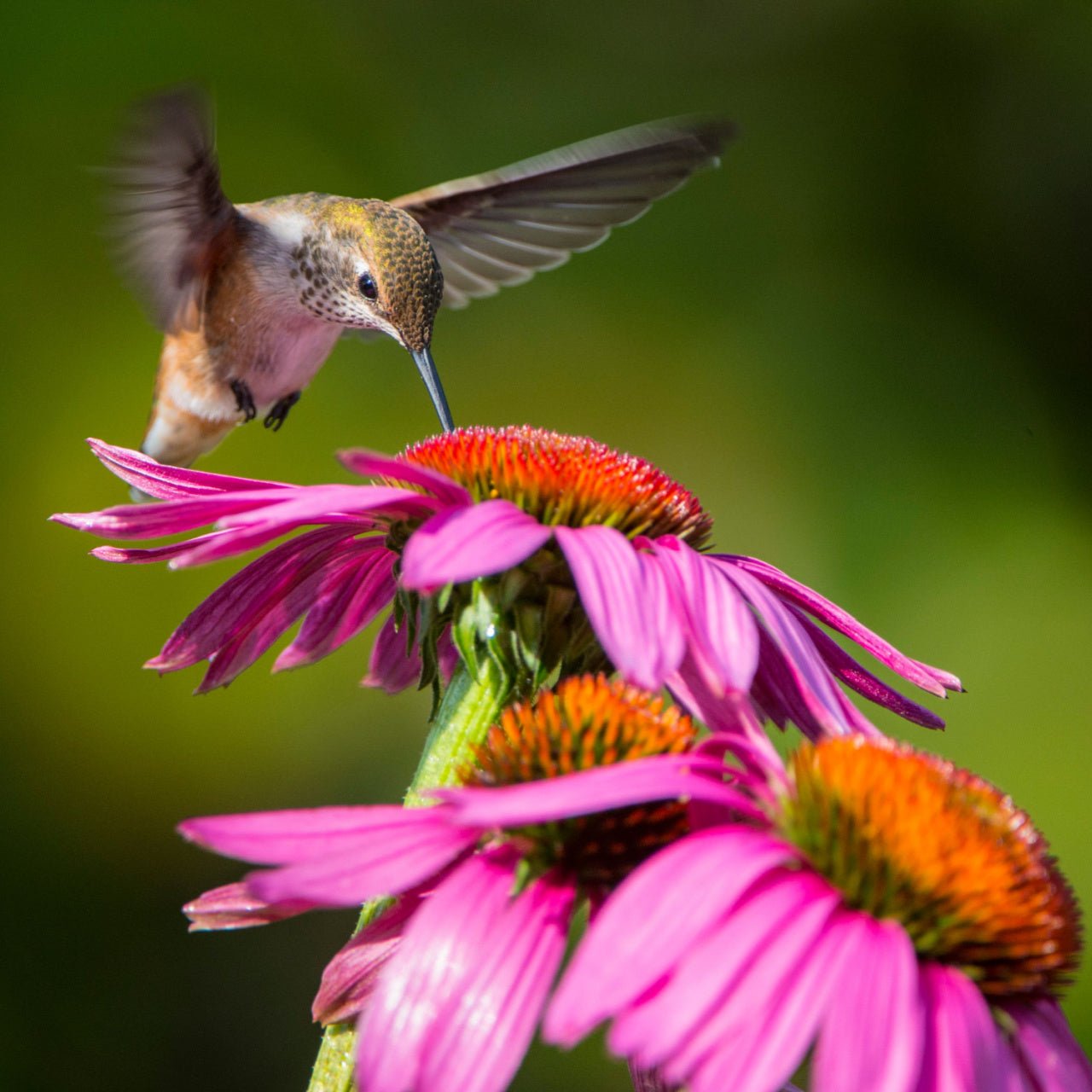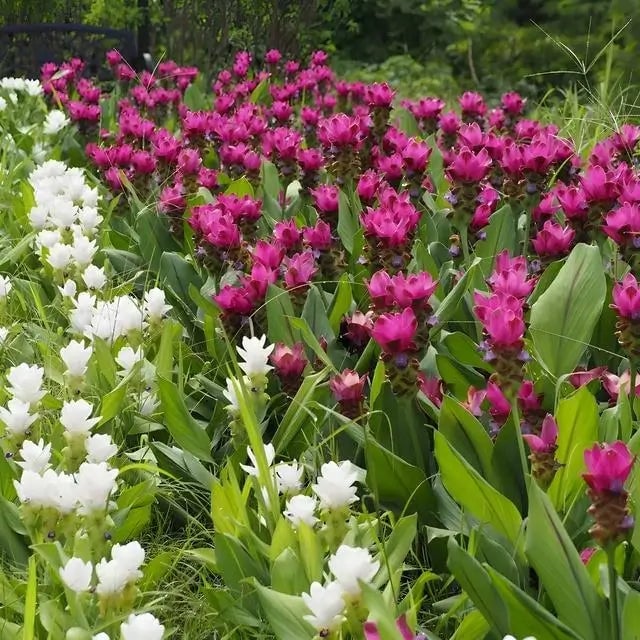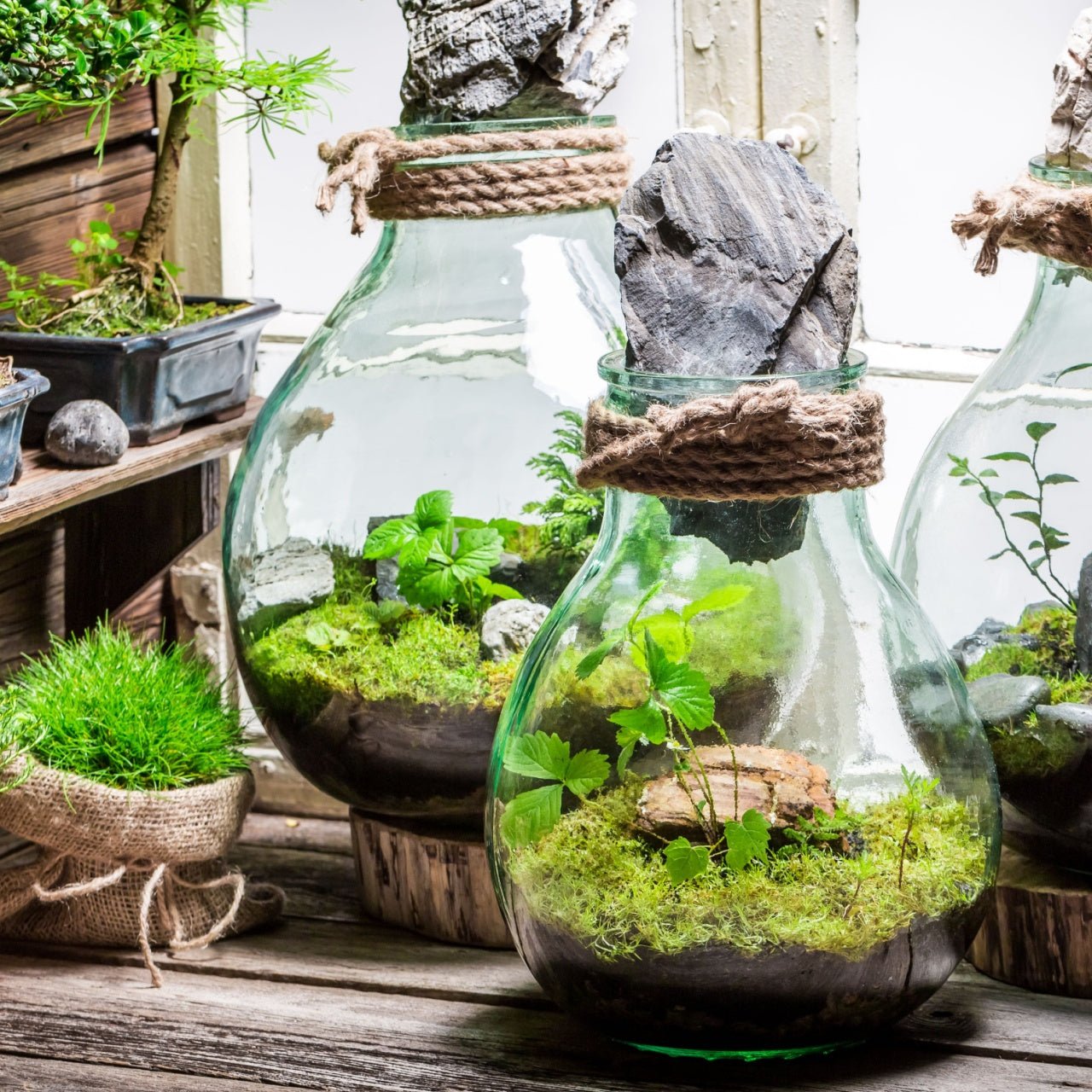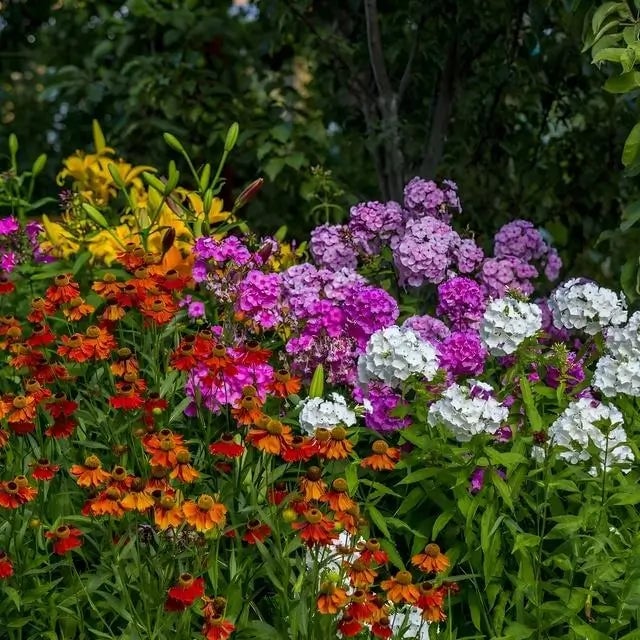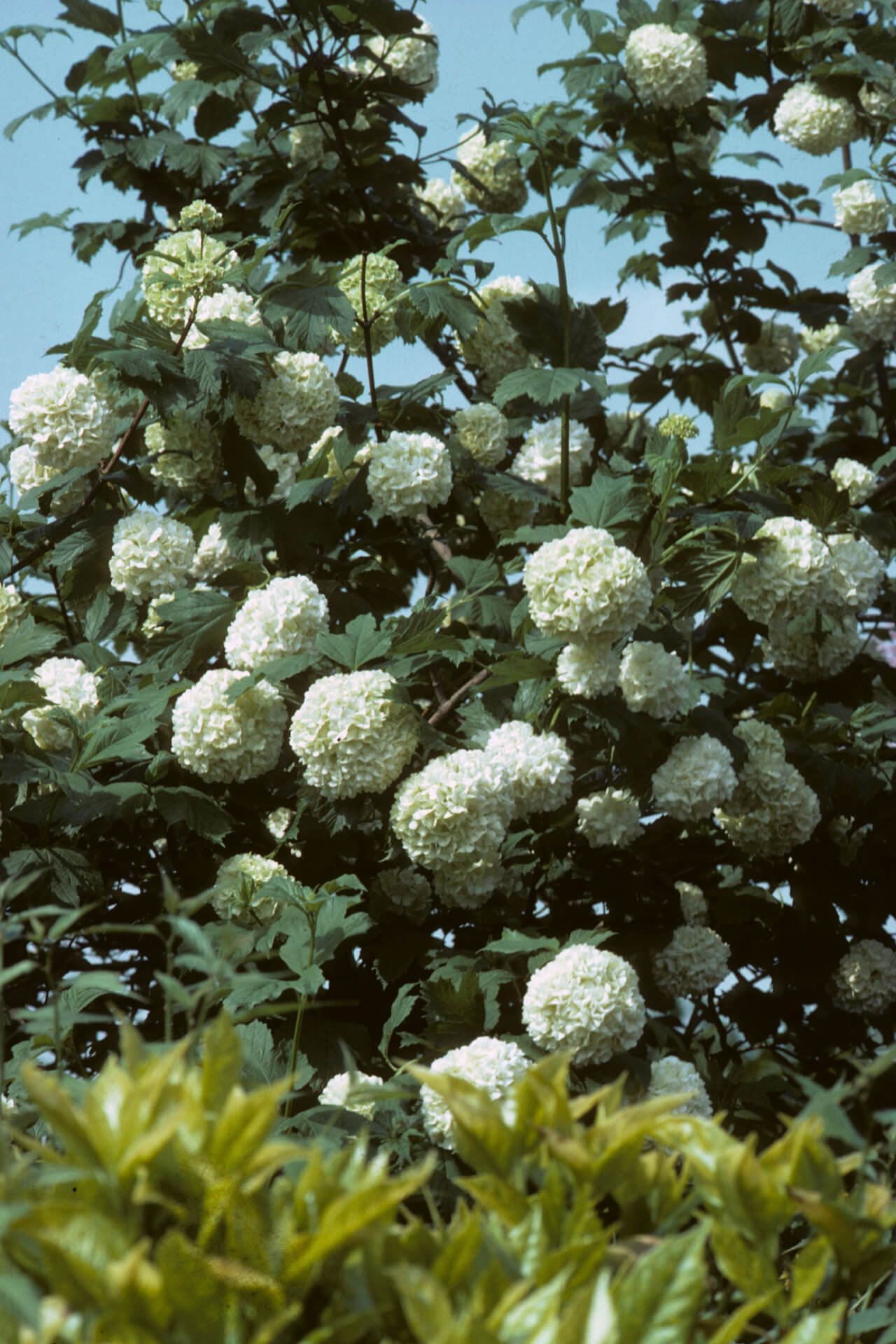
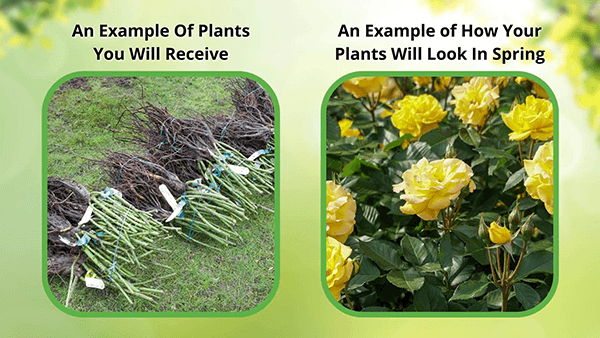
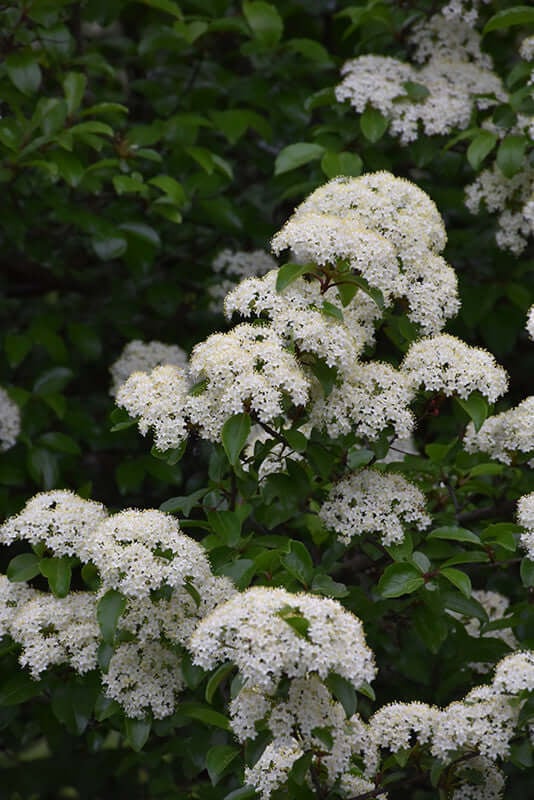

Black Haw Viburnum
Thrives in Zones 3 - 9
Attracts birds and beneficial pollinators
Resilient in various soil types
Beautiful, fragrant white spring flowers
Ships in
November 2025Black Haw Viburnum - Viburnum prunifolium
Black Haw Viburnum (Viburnum prunifolium) is native to central and eastern North America where it can be found growing naturally across many settings such as thickets, along streambanks and within moist woodlands. It is deciduous, with a suckering, multi-stemmed upright habit; however, it can be grown with a single trunk as a small tree.
In the spring, this shrub develops ovate leaves with finely serrated edges. Along the main vein of each leave, the sides bow up creating a boat-like shape. The scientific name prunifolium pays homage to the fact that the leaves resemble leaves of the Black Cherry (Prunus).
Plant Details - Black Haw Viburnum
Family: Adoxaceae
Hardiness Zones: 3 to 9
Light Requirement: Full sun to partial shade
Water Needs: Low to moderate
Height: 12-15 ft, can reach up to 30 ft
Spread: 6-12 ft
Growth Rate: Moderate
Bloom Time: Mid to late spring
Flower Color: Creamy white
Wildlife Value: Attracts bees and other pollinators, birds and mammals eat the berries
After the spring flush of foliage, the Black Haw Viburnum produces clusters of elegantly gentle, creamy white flowers which have a sweet and delightful fragrance that is attractive to a myriad of pollinators. The flowers give way to bright magenta-colored berries that mature to dark purple or black. The berries persist through the autumn and create a notable contrast to the rusty red, purple, orange, and yellow colors of the senescing leaves.
The berries are a favorite for local bird life and are edible for humans as well. To enjoy for yourself, pick the berries when they are mature and purplish black in color. They have a sweet, raisin-like taste when ripe. Use them to make jams and jellies or add them fresh to muffins or other baked goods.
Landscape Uses and Maintenance - Black Haw Viburnum
This multifunctional shrub is easy to grow and makes an attractive addition to a mix shrub border or hedge, or it can be grown as a specimen. It can easily be pruned into a tree form or left as a shorter multi-stemmed shrub. The size varies depending on how it is grown. When growing as a small tree, it can reach heights of 30 ft tall whereas when grown as a multi-stemmed shrub, it grows to a maximum of 15 ft.
It grows well in full sun to part shade conditions. It can also grow in deep shade but may not bloom reliably. It prefers well-drained, dry to medium moisture soil. Once established, it is drought tolerant. This plant normally has no serious pest or disease issues.
Noteworthy Characteristics
Easy to grow, edible fruit, attractive for wildlife.
Plant this versatile, easy to grow and reliable shrub in your garden and provide delicious berries for yourself and your local wildlife to enjoy. Shop for Black Haw Viburnum shrubs online at TN Nursery. For 68 years, we have served the landscaping industry and homeowners with specimen plants.
This Is How Your Plants Will Look upon Delivery
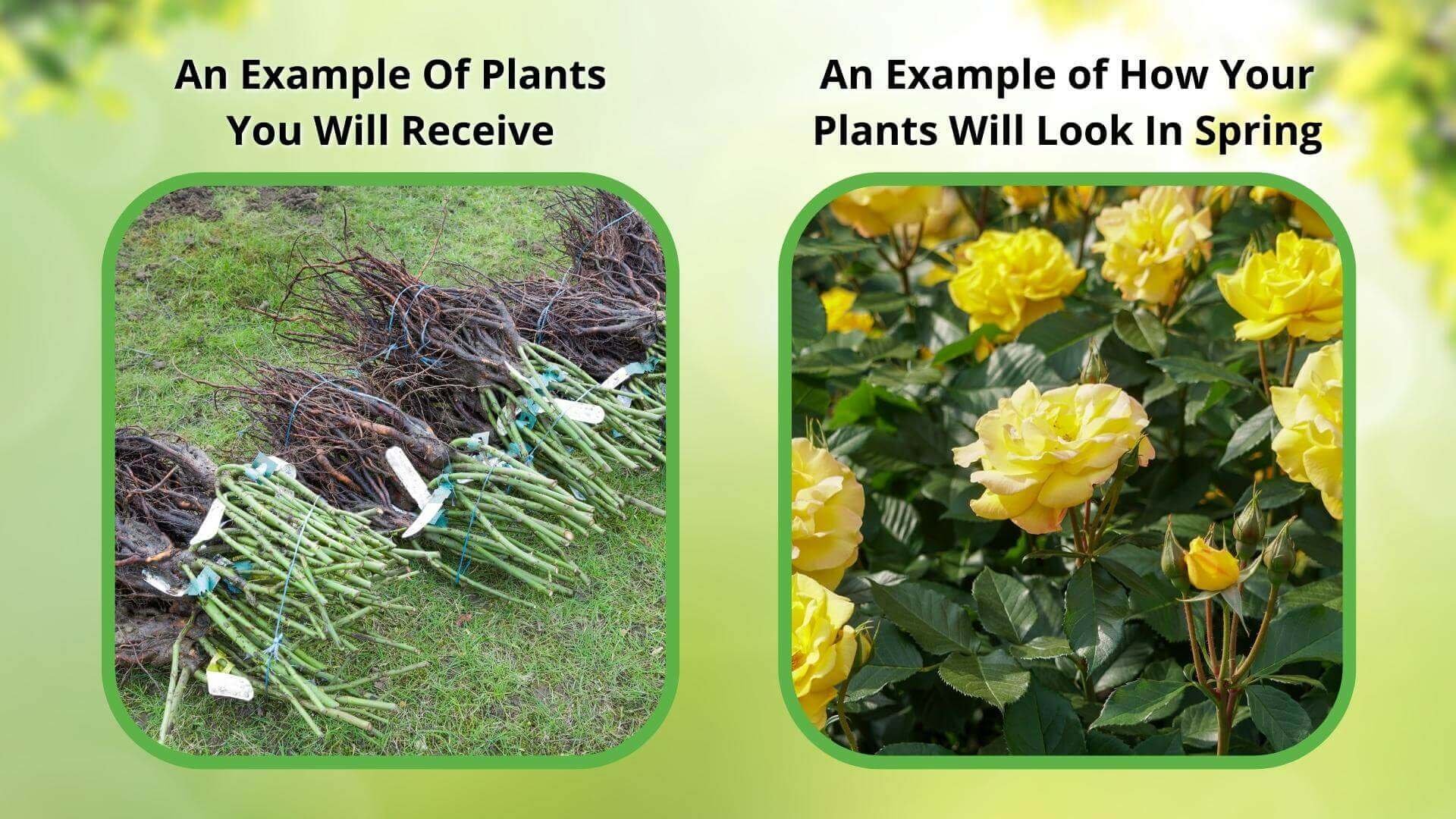
Bloom Season
Spring
Bloom/Foliage Color
White
Height at Maturity
Over 10 Feet
Care
Black Haw Viburnum (Viburnum prunifolium) thrives in sun to shade and well-drained, loamy soil. Water regularly during dry spells, and apply mulch to retain moisture. Prune after flowering to maintain shape. It's drought-tolerant once established.
Plant Reproduction
Green Black Haw Viburnum spreads via suckers and dense growth.
How to Grow and Care for Bare Root Shrubs
Bare root shrubs are a budget-friendly and efficient way to plant during the cooler months when they’re dormant. Before planting, soak the roots in water for 3–6 hours to rehydrate them. Choose a site with the appropriate light exposure for the species—most flowering shrubs prefer full to partial sun. Dig a hole wide enough to spread out the roots and deep enough so the crown (where the roots meet the stems) sits level with the soil surface.
Mound a bit of soil at the bottom of the hole, spread the roots over it, and backfill with native soil while gently firming it to remove air pockets. Water deeply after planting to settle the roots. Keep the soil moist but not soggy during the first growing season to encourage healthy establishment.
Mulch around the base (not touching the stems) to retain moisture and suppress weeds. Prune lightly to remove any broken branches and to shape after the first flush of growth. With minimal care, bare root shrubs will leaf out beautifully and grow into reliable, long-term landscape anchors.
Shipping date depends on the date displayed and chosen when you order from the product's page.
We do not accept returned plants. If you purchased an extended warranty we do accept claims, please navigate to the warranty page for instructions HERE





.png?v=1722012658360&em-origin=cdn.accentuate.io&em-format=auto)
Elegant Blossoms:
Black Haw Viburnum showcases clusters of creamy white flowers that add sophistication and beauty to your landscape. These fragrant blooms are a magnet for butterflies and bees, making your garden a lively and attractive spot.
Wildlife Attraction:
Known by gardeners as nannyberry or plum leaf viburnum, this plant produces berries that attract a variety of wildlife. Birds such as cedar waxwings, northern cardinals, and robins, along with ruffed grouse, find the berries irresistible.
Showy Berries:
After flowering, the plant produces striking dark berries that stand out against the foliage. These berries add visual interest and can attract various birds to your garden. Their color contrasts beautifully with the plant’s green leaves.
Attractive Foliage
Black Haw Viburnum boasts lush, glossy leaves that provide year-round greenery. Its foliage turns a rich, vibrant color in the fall, adding seasonal interest to your garden. This plant’s aesthetic appeal enhances any landscape.
Header
Use this content to share information about your store and products.
Frequently asked questions
Still have a question? Contact us here.
Yes, we ship all over the world. Shipping costs will apply, and will be added at checkout. We run discounts and promotions all year, so stay tuned for exclusive deals.
It depends on where you are. Orders processed here will take 5-7 business days to arrive. Overseas deliveries can take anywhere from 7-16 days. Delivery details will be provided in your confirmation email.
You can contact us through our contact page! We will be happy to assist you.








